Introduction
As part of the company’s “Global Vision” line, it replaces the earlier EX-series 50mm F1.4 DG HSM and has a complex optical construction consisting of 13 elements in 8 groups and a minimum focus distance of 40cm. Like previous Art-series models, it has sonic-type AF motor for smooth and quiet focusing, and externally it bears a strong resemblance to the previous Art-series primes. The lens is notably larger than its predecessor, however, featuring a large 77mm accessory thread, measuring 3.9 x 3.4” (100 x 85mm), and weighing in at a substantial 28.7 oz (815g).
After previously testing the impressive 50mm F1.4 DG HSM Art-series prime in Canon mount, we’ve now had the opportunity to analyze the Nikon-mount version across a range of F-mount DSLRs, including the 36-Mpix Nikon D810, and are pleased to reveal the results.
Outstanding peak sharpness
When tested on the 36-Mpix Nikon D810, the Sigma 50mm F1.4 DG HSM A achieves close to the best-in-class DxO Mark lens score of 45 points. It has excellent peak sharpness of 34 P-Mpix, meaning that it’s delivering an image with close to the maximum detail from the sensor. The lens also has very low distortion as you might expect at this focal length, low vignetting (measured at –1.2 EV at its highest), and relatively low chromatic aberration.
Transmission is little lower than we might expect at this price, however, being some –0.7 EV below the maximum aperture value, but it’s still good a result overall.
At the maximum aperture, this lens has good sharpness — especially centrally, though it tails off to the corners, where some chromatic aberration is visible. Stopping down just one stop noticeably improves sharpness across the image field, although most gains are made in the outer field.
At f/2.8, the lens has a very flat field with practically no astigmatism and outstanding sharpness right out to the corners of the frame. Peak sharpness is achieved at f/4, while f/5.6 and onwards offers a slight improvement in uniformity, albeit with noticeable decrease in sharpness at f/16.
Generally, chromatic aberration is low, but it is not the best-in-class. As mentioned previously, there’s some fringing noticeable in the corners wide-open, but it’s visible at all apertures. Stopping down lowers chromatic aberration somewhat in the extreme reaches, albeit with a slight increase in the centers — though that’s negligible in the lab and would be hard to detect in use.
Distortion is negligible, but vignetting is almost always an issue with high-speed lenses, however, with today’s software it is simple to correct. Wide-open, it measured –1.2EV at its peak in the corners, but vignetting was almost completely absent at f/2 and gone by f/2.8.
Sigma 50mm f/1.4 Art comparison
Something as pricey as the Sigma is going to be compared with the Zeiss Otus 1.4/55 and the Nikon AF-S Nikkor 58mm f/1.4G, and it doesn’t disappoint. It is the cheapest of the three by some margin (the Nikkor is $1,700, and the Otus is an eye-watering $3,999), and the much-maligned Nikkor doesn’t score all that well in terms of sharpness, which in turn leads to a much lower DxOMark score of 30 points. That’s a real shame, as the distinctive drawing style (or rendering) of the Nikkor is highly regarded.
The sharpness of the Nikkor is a bit on the low side, particularly wide-open mid-field, where it has noticeable field curvature and astigmatism, but that’s all part of its character. However, it is sharp centrally when stopped down. By comparison with it and the Sigma, the manual-focus Zeiss model is the better performer at wider apertures, particularly at the initial aperture. If that’s critical, the Otus can’t be beaten, but the Sigma is still excellent and has closed the gap by f/2.8.
Both the Zeiss and Nikkor have similar transmission, but the latter has relatively high barrel distortion — another reason its overall DxOMark score is behind that of the Zeiss and the Sigma. Ironically, the Nikkor has very low lateral chromatic aberration, albeit across the field, and it has almost identical vignetting with that of the Sigma, and at the same point at which the Zeiss is arguably at its weakest.
Conclusion
As one of the key models in Sigma’s new range of high-speed premium Art-series models, the Sigma 50mm F1.4 DG HSM A is notable for high sharpness and control of aberrations, particularly at wide apertures. While it is all too easy to dismiss the Nikkor for its rather low sharpness (particularly at wider apertures), and the Zeiss for its price (with an optical performance that rarely comes cheaply), the Sigma 50mm F1.4 DG HSM A Nikon-mount version is a highly desirable alternative to the more esoteric models available.


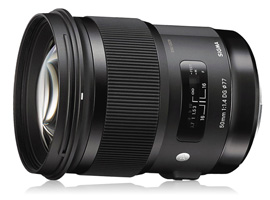



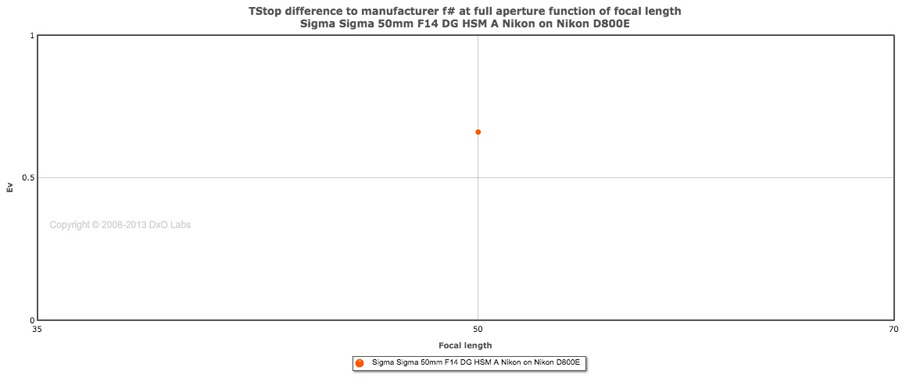
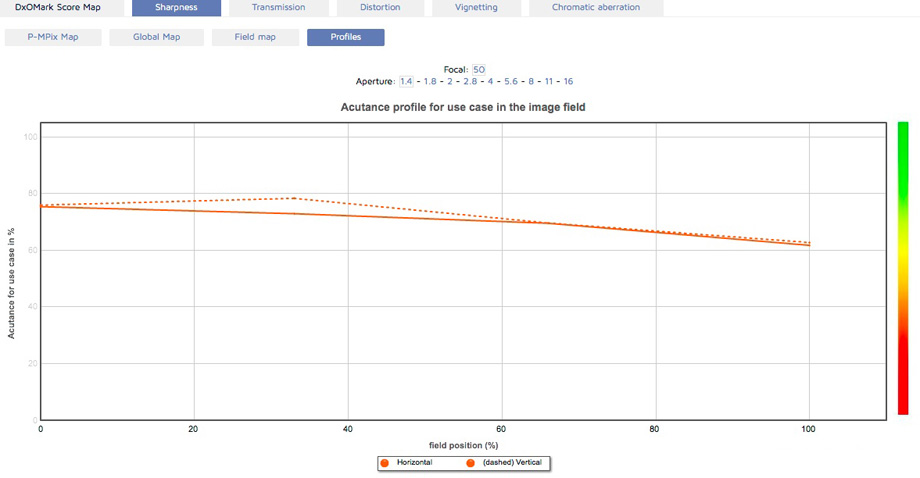
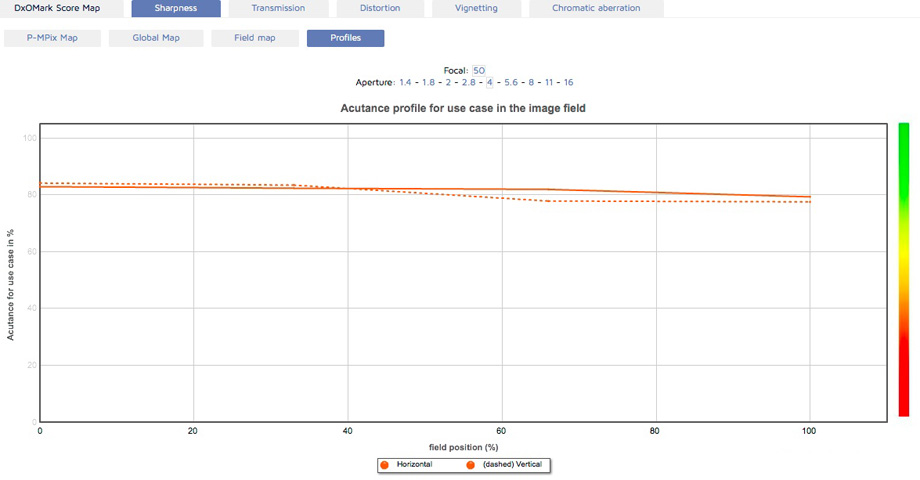
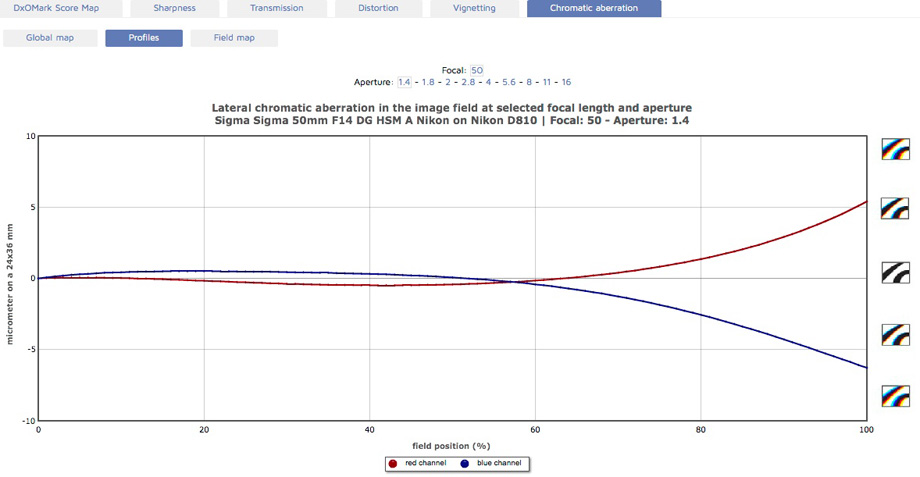
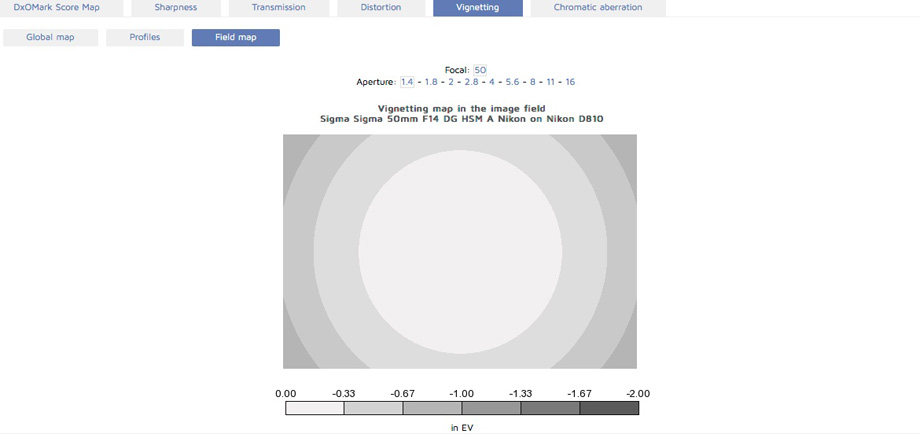
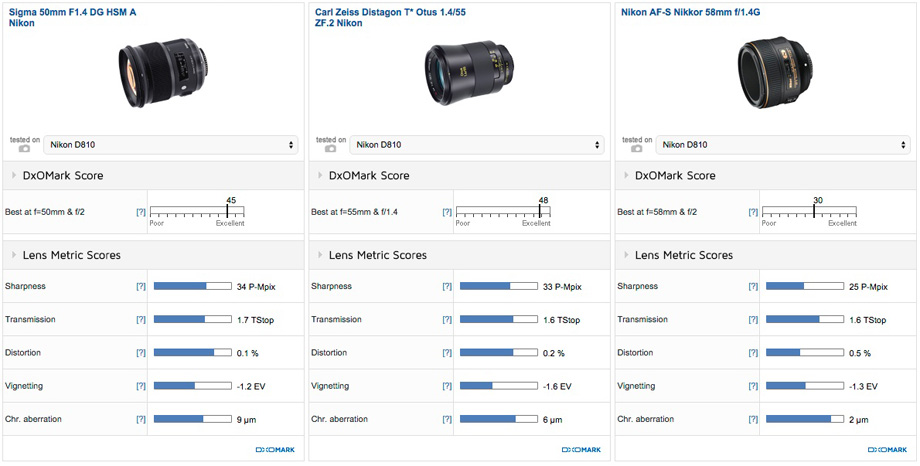
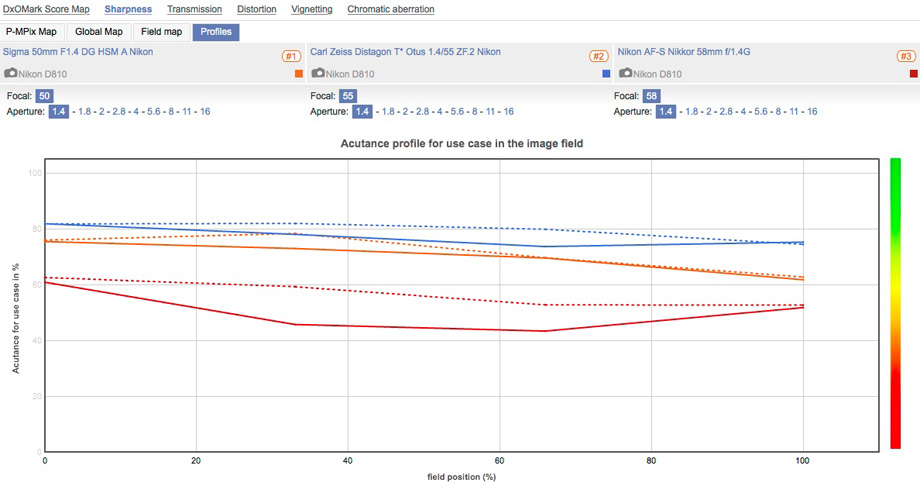
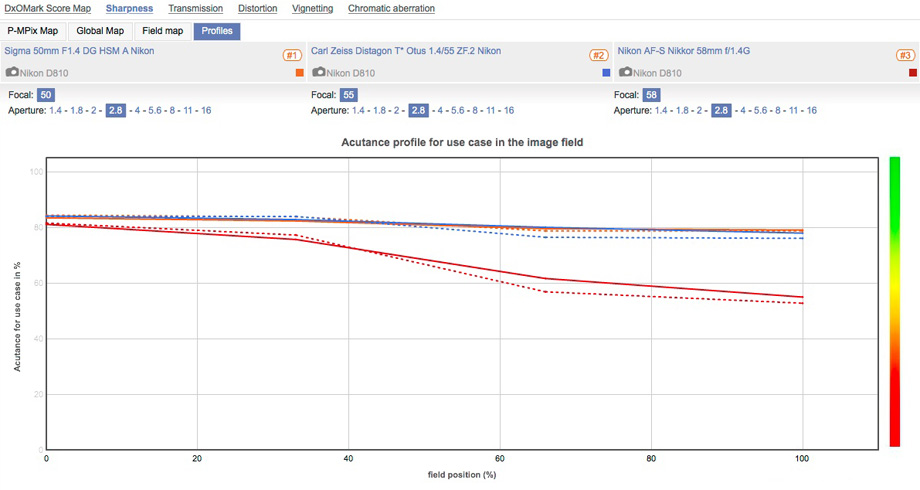
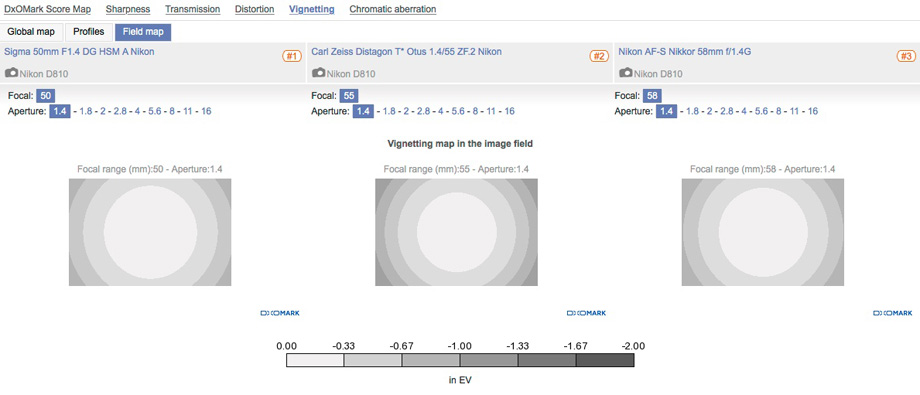
DXOMARK encourages its readers to share comments on the articles. To read or post comments, Disqus cookies are required. Change your Cookies Preferences and read more about our Comment Policy.